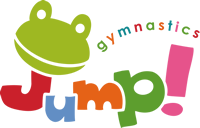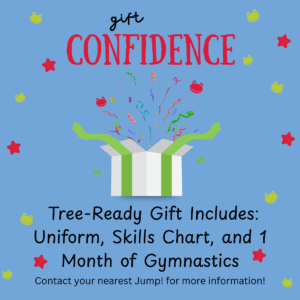Have you ever had an accountability buddy for a health goal, work goal or personal goal? Turns out, partnering up is motivating for children too!
We partner kids up during class, and it’s become one of the most powerful tools in our coaching toolkit. Pairing students together on each event has created some truly incredible results, both for developing gymnastics skills and for building the friendships, confidence, and social skills our children carry with them everywhere they go.
You might think partnering would slow things down or mean they get fewer turns, but the opposite is true. Let us break down why this approach has become such a game-changer for our students.
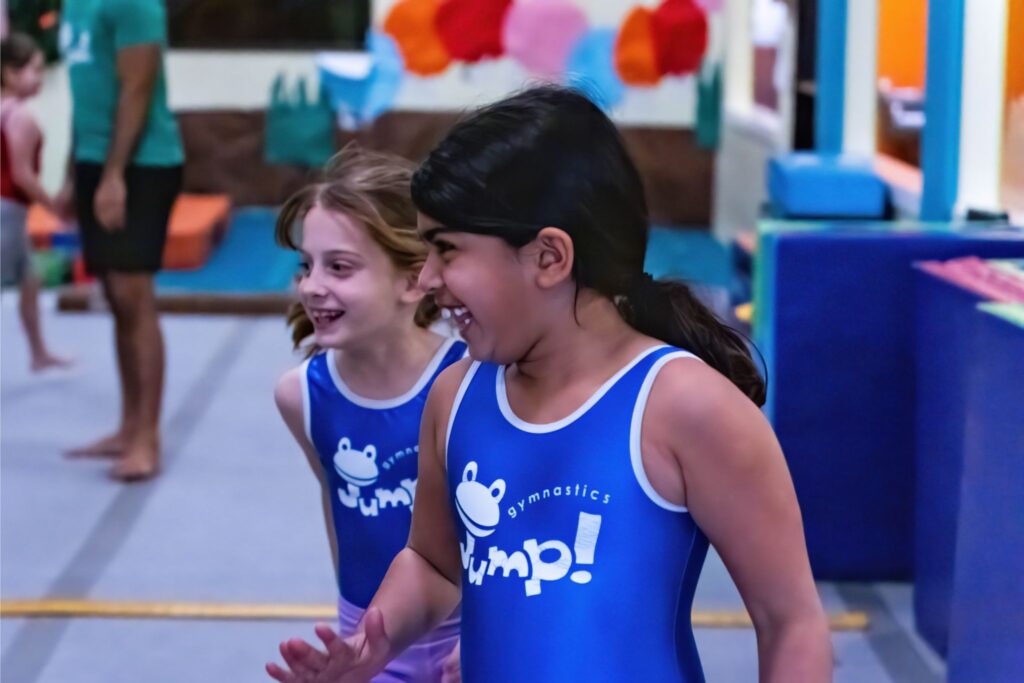
Making friends while making moves
One of the most beautiful things we see every day is friendships forming on the gym floor. When they work together as partners, they naturally start communicating, collaborating, and supporting each other. They figure out how to take turns fairly, how to encourage someone who’s nervous about trying something new, and how to problem-solve together when something isn’t quite working.
These social skills stick around long after they’ve perfected their roundoff back handspring. Learning how to be a good partner, how to cheer someone on authentically, and how to work as part of a team are lessons that translate to school, family life, and every relationship they’ll have down the road. We’re not being dramatic when we say that some of our students’ best friendships started because they were beam partners or vault buddies.
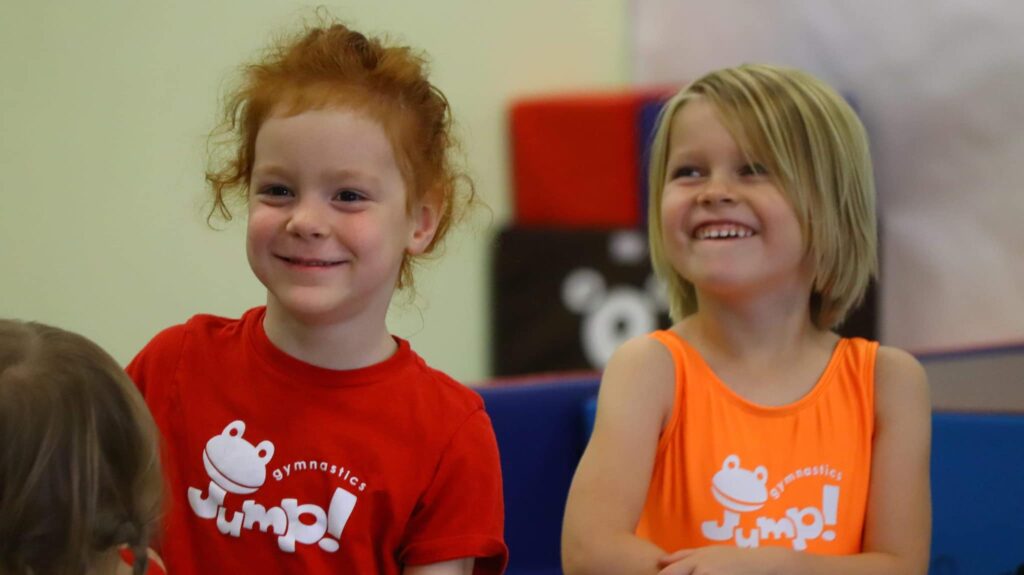
More turns = more learning (yes, really!)
This surprises a lot of parents, but partnering actually means children get more turns and more practice time, not less. The secret ingredient? Good old-fashioned FOMO (Fear of Missing Out). When they watch their partner taking a turn, something amazing happens. They get excited, they start anticipating their own turn, and they stay mentally engaged with what’s happening even when they’re not the one performing.
That anticipation builds motivation. Instead of zoning out or getting distracted while waiting, they’re watching intently, getting pumped up, and staying ready to jump in the moment it’s their turn. The result? Kids actually take more turns and practice more skills than they would if they were working alone or waiting in a longer line.
For our youngest Pollywogs, this FOMO effect is especially powerful. Watching their partner creates that irresistible “me next, me next!” energy that keeps them moving, trying new things, and pushing themselves in ways they might not if they were flying solo. There’s something about seeing another child their age nail a skill that makes them think, “I can do that too!”
Monkey see, monkey do (but make it gymnastics)
As students grow and move into our Frogs classes, partnering unlocks an entirely new level of learning: education through observation. When they watch their partner perform a skill, they become mini-coaches in their own right. They can spot what’s working well, notice what needs adjustment, and start understanding how to improve their own technique based on what they’re seeing.
This peer-to-peer learning is incredibly valuable. Sometimes seeing another child work through a skill provides insights that are different from what they get from coach instruction. They might notice, “Oh, she bends her knees more on the landing” or “He keeps his arms straighter during that move.” Then when it’s their turn, they can apply those observations to their own performance.
It creates this beautiful cycle of learning where children are both teacher and student, observer and performer. They develop a deeper understanding of the mechanics of gymnastics because they’re analyzing movement from multiple angles.
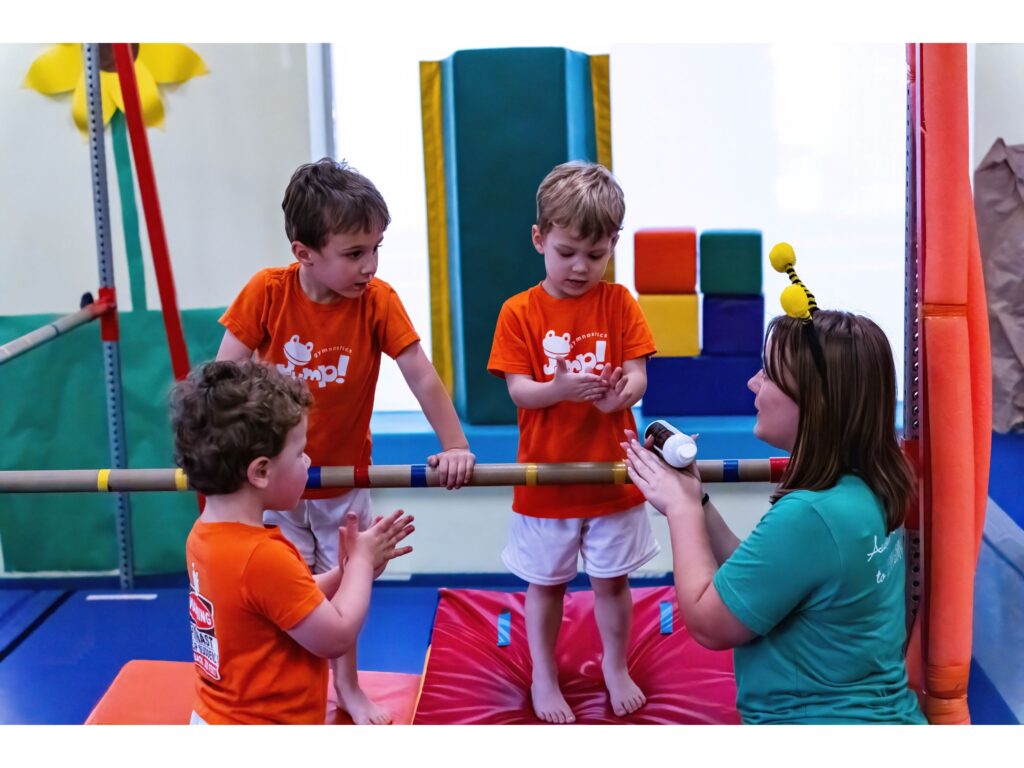
Staying locked in and focused
Kids have a lot going on in their heads, and staying focused for an entire class can be challenging. But when they’re partnered up, something shifts. The back-and-forth rhythm of taking turns keeps them present, engaged, and paying attention throughout the class.
There’s an accountability factor too. When you have a partner counting on you to be ready for your turn, to pay attention to their performance, and to be an active participant, they naturally rise to that responsibility. They’re less likely to wander off mentally or physically because they have someone depending on them. That sustained engagement means they’re soaking up more from every minute of class time.
Cheerleaders in training: building a supportive culture
Maybe the most heartwarming part of our partnering approach is watching them become each other’s biggest cheerleaders. They learn to genuinely celebrate their partner’s successes, not just tolerate them. They offer encouragement when something’s challenging instead of criticism. They high-five after a great attempt and offer a supportive word after a tough one.
This creates an atmosphere in our gym where everyone feels safe to try, stumble, dust themselves off, and stick the landing on the next attempt. There’s no judgment, no competition in the negative sense, just pure support and shared celebration. Children learn that another person’s success doesn’t diminish their own, and that being kind and encouraging makes everyone better.
That positive, supportive environment doesn’t just make gymnastics more enjoyable (though it absolutely does). It builds self-esteem, resilience, and emotional intelligence. Children who learn to support others and accept support in return develop a confidence that radiates into every area of their lives.
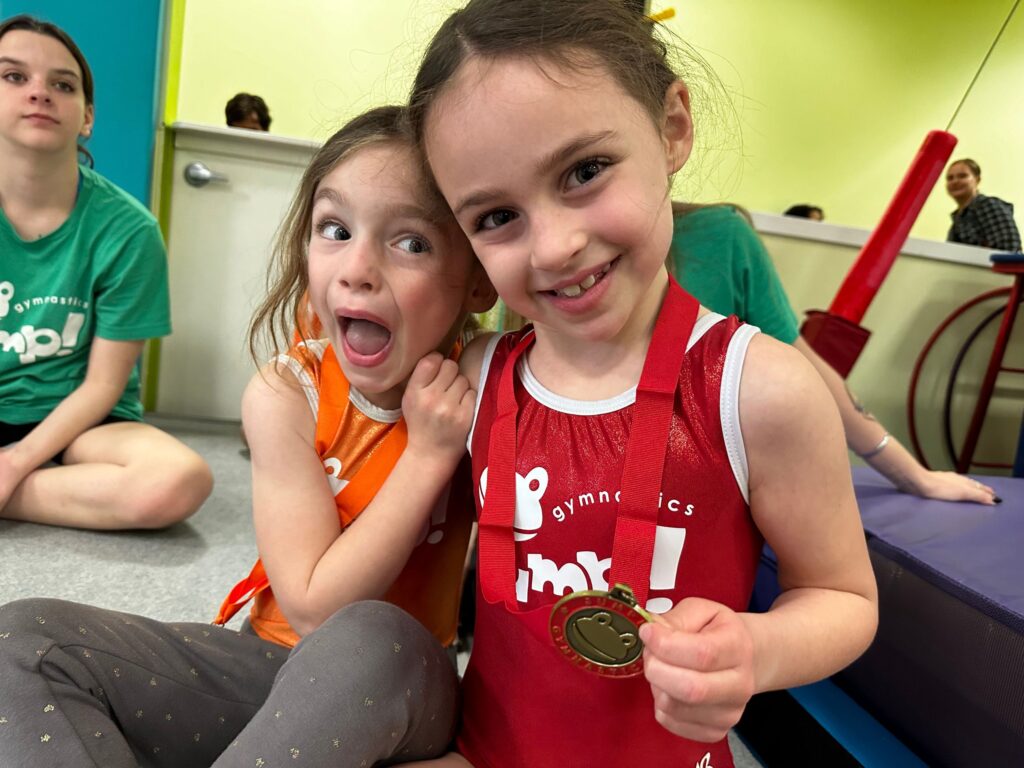
Why this matters beyond the gym
At Jump!, partnering isn’t a happy accident or a logistical convenience. It’s a deliberate, thoughtful approach to teaching that shapes not just better gymnasts, but better humans. We’re helping them become confident communicators, supportive teammates, resilient problem-solvers, and empathetic friends. We’re teaching them that success is sweeter when shared and that working together makes everyone stronger.
Every time a child reaches out to steady their partner on the beam, cheers for a successful vault, or offers an encouraging word after a tough tumbling pass, they’re practicing skills that will serve them for a lifetime. They’re learning what it means to be part of a community, to lift others up, and to believe in themselves and their peers.
Come see the power of partnering in action
We’re not flipping out over nothing when we say partnering makes all the difference at Jump! It’s woven into everything we do, and it’s a huge part of what makes our gym culture so special. If you’ve ever wondered why your child comes home talking about their gym partner or why they’re so excited to see their buddy at class, now you know the secret.
Come watch a class and you’ll see it happening in real-time: children laughing together, encouraging each other, learning from one another, and building skills and friendships that will last long after they’ve moved on from cartwheels and handstands. That’s the power of partnering, and we couldn’t be prouder of the incredible community it’s helped us build.
Want to see partnering in action? Join us for a trial class.
Know someone that would benefit from Jump! Gymnastics? Refer a friend and receive $20 off.
